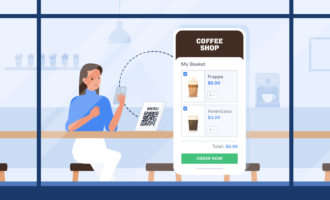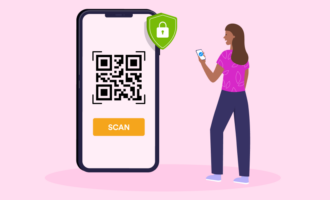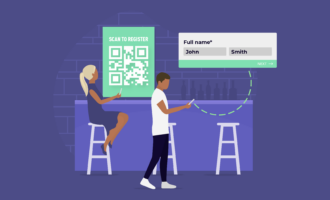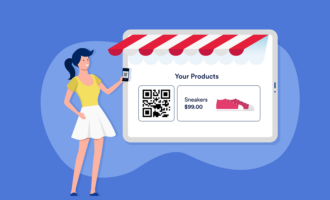Ways to use QR codes for inventory management
- Gather product information
- Update product location
- Update quantities
- Track items
Businesses have been using scannable barcodes to manage inventory for decades. That’s primarily what the barcodes were designed to do.
QR codes are another type of scannable code. Developed in the 1990s, they’ve recently become more popular to use to scan menus, business cards, and promotional materials. However, they were originally designed to manage inventory. In fact, they were meant specifically to help manage the growing requirements of modern inventory systems, and they continue to serve this purpose.
Create QR Codes in Minutes
The benefits of using QR codes for inventory
One of the biggest benefits of using QR codes is that you don’t need a specialized scanner to read them. You can use any smartphone. This accessibility is a major reason why they’ve become so popular.
Chances are that every employee in your company already has a smartphone. And with dynamic QR codes, you eliminate the need for special software. You can use a basic web-based scanner app and copy and paste what you scanned. Or, you can change the URL in the code to perform different actions, which brings us to the next benefit.
QR codes hold much more data than barcodes. The largest barcode can only hold about 100 characters, and most formats can only store numbers. The largest QR code, on the other hand, can hold over 4,000 characters.
QR codes are also quite durable. You can scratch off or damage up to 30 percent of a code and it will still be readable. That makes it ideal for warehouses where things get bumped and scuffed.
Here’s how you can use QR codes for inventory management:
Gather product information
Because QR codes can store so much more data, you can use them to store a lot more information about your inventory. For example, QR codes can contain information like ingredients, nutritional details, and expiration dates for food items, as well as tracking information and URLs.
You can use web addresses in QR codes to track information that may change over time. For example, you can access location data that tells you where a product is.
Update product location
Traditional barcode systems only stored product ID numbers. You needed additional software to gather information about that product, which was often limited.
However, QR codes allow you to store both a product ID and specific data for each inventory item, so you can track every item individually. With QR codes, you can scan any product in your warehouse to see if it’s in the right place. If it’s not, you can see where it belongs.
You can also add QR codes to specific areas of your shop or to individual shelves. Then you can use those location QRs to maintain and relocate your inventory while minimizing losses.
Update quantities
QR codes also give you a more accurate count of products in your inventory. With traditional bar code systems, you could only get the overall quantity of a product. But what if you were supposed to have 52 of an item but only had 49? You couldn’t track down the missing items or figure out if they were stolen, damaged, or just misplaced.
With unique QR codes, you can track quantities in each location where your business might store an item, whether it’s long-term storage, shipping and receiving, or on someone’s desk. If one location is missing three items, for example, you can quickly check other spots to see if someone put them in the wrong place.
Track items
By tracking individual items, you can see quantities and their locations. And you can follow each item as it moves through your pipeline from storage to testing to assembly to packaging to shipping. Just scan each item as it hits each checkpoint on your factory floor to update its status.
Generating QR codes and using inventory tracking software
You might think all this advanced inventory management only works for billion-dollar corporations. But what about startups?
If you have a small business, you can still track your inventory like a pro. You just need a flexible and powerful tool like Jotform.
With Jotform, you can instantly generate QR codes for inventory forms and other tools. Jotform Tables is an ideal tool for inventory management. It automatically tracks each form submission, so you can update inventory in real time. It also offers several inventory templates to help you set up a system. Jotform has a generous free plan, so you can get started using it right away.
Photo by Kampus Production

























































Send Comment: